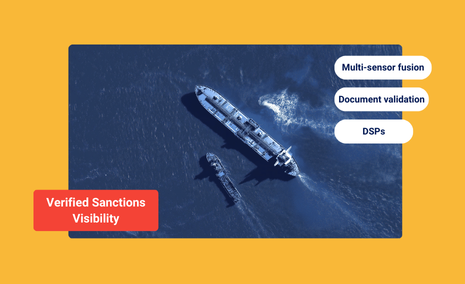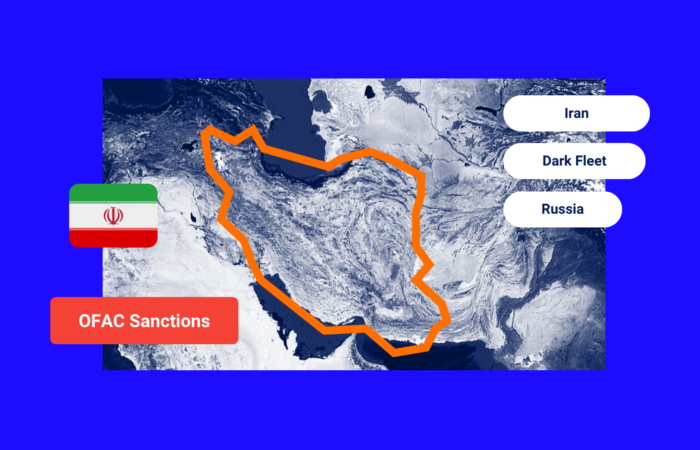Maritime Global Trade Roundup – May 2, 2024

What’s inside?
You need to know:
- Two main factors that make the 5 recent Houthi rebel attacks significant
- The attacks’ effect on the supply chain – guess who is benefitting…
- Who unseated China as the largest Russian crude oil importer
This week’s Maritime Global Trade Roundup has these answers and more. Check out the easily-digestible highlights and trends, powered by Maritime AI™ insights.
2 New Developments from 5 Houthi Attacks
The Houthis resumed their attacks on shipping vessels last Wednesday, April 24, after a long period of not executing any successful attacks. They have attacked five vessels – the Maersk Yorktown, MSC Veracruz, Andromeda Star, Cyclades, and MSC Orion since April 24. Two of the incidents were particularly noteworthy for what they indicate about the future:
- The MSC Veracruz
- On the same day of the attack on Maersk Yorktown, the MSC Veracruz (IMO: 9287924) was also targeted by the Houthis for being an Israel-affiliated vessel.
- The vessel’s AIS data shows that it departed on March 24 to the port of Houston (U.S.), sailing for the first time through The Cape of Good Hope. On April 24, after arriving to the Horn of Africa region, the vessel’s AIS transmission was lost while sailing in the Indian Ocean, more than 600 NM off the port of Aden, Yemen. The vessel’s transmission resumed on the same day and it continued sailing to the UAE.
- It is possible that this is the first attack carried out by the Houthis away from the Bab-el-Mandeb Strait area via drones. This may also be the first attack executed against a vessel arriving in the area from The Cape of Good Hope and not entering the Red Sea.
- The MSC Orion
- The MSC Orion (IMO: 9857157) was also targeted by the Houthis while sailing in the Red Sea, on April 29.
- The vessel departed the port of Malaga, Spain on March 30, and sailed south towards The Cape of Good Hope, arriving in the West Africa region for the first time. On April 19, the vessel crossed The Cape of Good Hope and sailed towards the Horn of Africa, updating its destination to Oman.
On April 26, the vessel entered the Arabian Sea and on April 27 started conducting an ongoing dark activity 180 NM off the Socotra Island, Yemen. According to open sources, the vessel was also targeted by a drone while sailing in the Arabian Sea, similar to the case of the MSC Veracruz.

- As seen above, there has been a noticeable escalation in the attacks carried out by the Houthis against the shipping industry since April 24. The MSC Veracruz and MSC Orion incidents suggest:
- The Houthis might have stepped up their abilities and now target vessels sailing outside the Red Sea
- They are using drones for this long-distance targeting
The Red Sea Crisis might worsen in the coming weeks, with attacks continuing to threaten maritime security and the global supply chain.
Impact of Recent Houthi Attacks on Supply Chain
- Red Sea premiums and charter earnings increased drastically, with daily earnings of over 20,000 USD per container ship on average, due largely to Iran’s attack and the escalated Houthi attacks. Chinese freighters profit from the crisis – their premiums are highest because they can sail in the Red Sea without being attacked and the freight market has weakened.
- As noted, the Houthis decided not to target Chinese ships, which grants these vessels a “free pass” in the Red Sea and the ability to operate in the area without any problems. From mid-October through mid-March, the average number of Chinese vessels per week that passed through the Suez Canal and docked at a Chinese port rose 73% compared with the previous six months.
- Windward’s Sequence Search capability shows that since the beginning of 2024, there has been a significant increase in the number of container vessels and bulk carriers owned by Chinese companies that sailed in the Red Sea and Aden Region after making a port call in China (showing Chinese exports). There was a 40% increase in the number of area visits in the Red Sea and Aden regions by Chinese-owned container vessels and bulk carriers previously arriving from China from March to April 2024.
Area visits in the Red Sea and Aden region by Chinese-owned container vessels and bulk carriers previously making a port call in China, May 2023-April 2024.
Chinese vessels’ activity in the Red Sea increased in April 2024 – it is likely these vessels were not harmed by the Houthi attacks, as promised by the Houthi rebels. Using the Windward Maritime AI™ platform, it is possible to see the geopolitical effects on maritime shipping and understand the price increase seen by Chinese freighters since the beginning of the Red Sea crisis.
Increase in Russian Oil Supply to…
India unseated China as the largest Russian crude oil importer in April 2024. Russia has remained the top supplier of oil to India, surpassing Saudi Arabia and Iraq.
- Windward’s Sequence Search capability shows a 27% increase in the number of port calls in India by crude oil tankers arriving from Russia between February and March 2024, with April showing a slight decrease of 5%.
Port calls in India by crude oil tankers previously conducting port calls in Russia, July 2023-April 2024.
- Additionally, Windward’s data show that deceptive shipping practices were also utilized for supplying oil to India. Sequence Search finds that in April 2024, the number of crude oil tankers making a port call in India after dark activity in Russia and the Black Sea was the highest in the last six months. Between February and March 2024, the number of port calls by these crude oil tankers increased by 93% and remained the same in April 2024.












